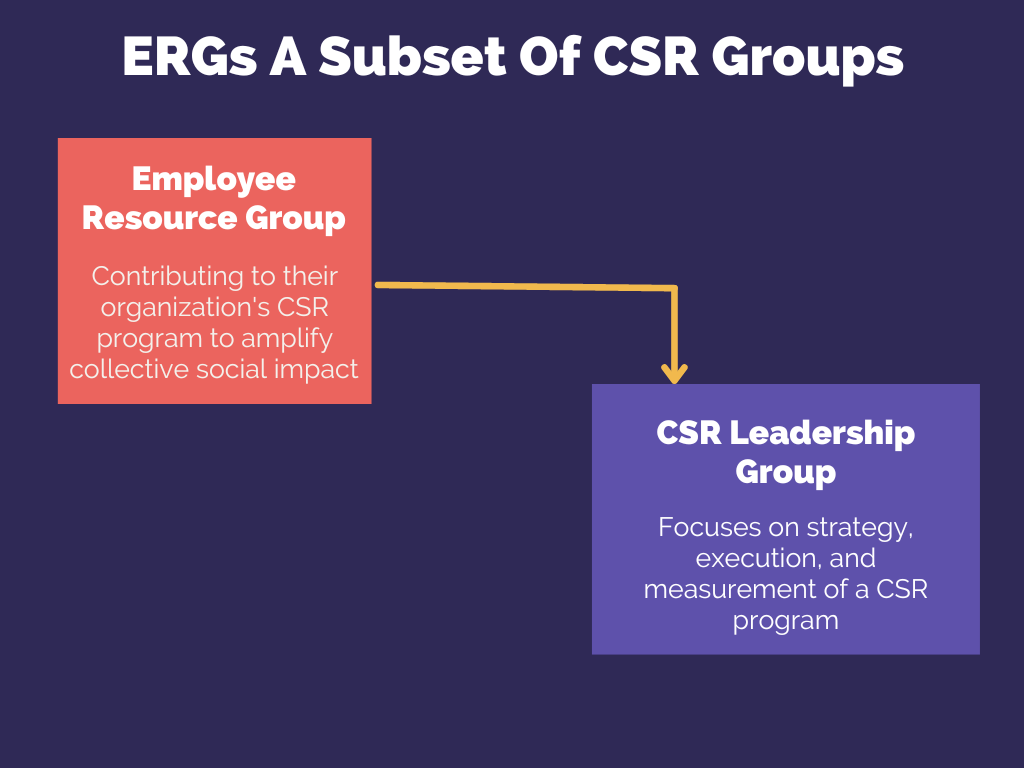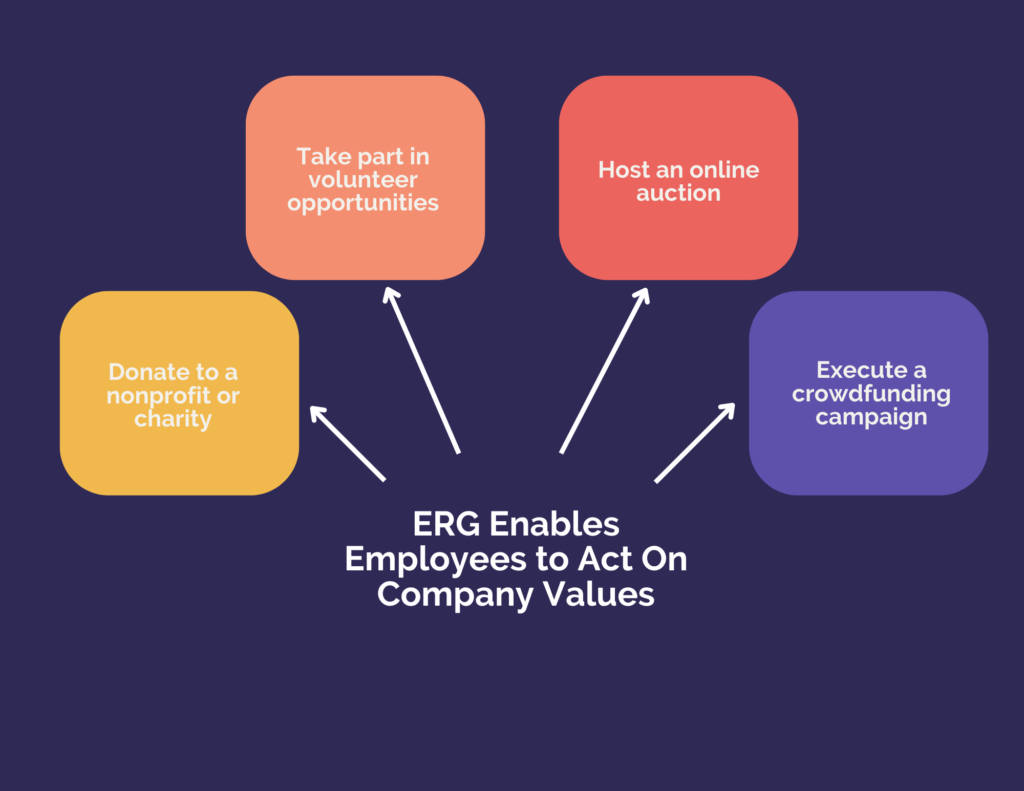Kyle has achieved success at his organization: he recently has been promoted to a senior position, finds his job rewarding, and feels supported by his manager.
While fulfilled in his new role, Kyle still feels like something is lacking. He participates in his company’s CSR program, but he wishes a group of his colleagues, who are also frequent participants in the program, would unite to organize their own CSR initiatives. A group where his colleagues could support and collaborate with each other to help grow their organization through social good.
The solution? Employee resource groups.
Employee resource groups (ERGs) are grassroots initiatives created by employees, for employees, with the support of leadership. Employees who share interests, aspirations, and characteristics from across departments will establish an ERG to make positive changes within their organization.
While ERGs enable your employees to have a voice and take on additional responsibilities in the workplace, the benefits aren’t one-sided. If your organization is wondering how an ERG can improve your organization’s CSR program, we discuss how ERGs can have a profound impact on your results.
Employee Resource Groups & CSR
CSR is often associated with company-led fundraisers, corporate donations, and company-wide volunteer days organized by a CSR leadership team. However, as employees are becoming more interested in spearheading these efforts as well, they are forming ERGs to take action and strengthen CSR initiatives, resulting in a greater collective social impact.

Let’s further explore the connection between ERGs and CSR:
ERGs boost employee engagement
When employees have the ability to take matters into their own hands and organize a CSR initiative through employee resource groups, the degree of enthusiasm and dedication to accomplishing a task improves.
For example, Company ABC supports employee resource groups, in which a group of 20 employees band together to improve volunteer output within their organization’s CSR program. The ERG accomplishes the following in one year:
- Hosted 3 employee-led volunteer days throughout the year (with an average of 4 hours per volunteer day).
- Gathered a total of 60 employees to participate in the 3 volunteer days.
Results: 4 hours (average volunteer shift per employee) x 60 employees= 240 volunteer hours
ERGs intrinsically motivate employees
For your CSR program to produce results, the contributors behind those efforts need to be intrinsically motivated, stemming from an individual’s inner desire to accomplish a goal and reach their full potential.
As ERGs operate with the purpose of connecting like-minded professionals and encouraging individuals to reach their full potential, intrinsic motivation naturally arises from within each member.
Let’s use the example of an ERG setting up a volunteer day: a toy drive to help their local women’s shelter during the holiday season. Each employee in an ERG is participating in an act of kindness whose purpose is to uplift their communities. The feelings of accomplishment and pride that can be experienced from helping to execute this volunteer day are what intrinsically motivates each member to go the extra mile in order to deliver successful outcomes.
ERGs enable employees to champion company values
An ERG provides employees with ample opportunities to embrace their company’s values. If a company believes in engaging in charity work, employees in an ERG can help make this value come to life by:
- Making a group donation to a nonprofit or charity.
- Finding one volunteer opportunity per quarter that their ERG can attend and encourage involvement from other colleagues.
- Hosting an online auction on a social impact platform, encouraging virtual attendance from both their colleagues and the general public.
- Executing a crowdfunding campaign, where the ERG sets up a centralized fundraising page to collect donations from their personal networks.

ERGs engage employees in CSR leadership roles
Employee resource groups are a subset of an organization’s CSR group, a leadership team responsible for building a CSR strategy, outlining initiatives, encouraging employee participation, and measuring performance.
As individuals within an ERG have spent time developing their CSR expertise—focusing on similar tasks as to what the broader CSR group is undertaking—they are the most qualified resource to give the CSR group suggestions, such as:
- Adopting software to track the results of the organization’s CSR initiatives. For example, a social impact platform can be used to automatically track the amount donated, the number of fundraisers executed, and the number of volunteer hours accumulated.
- Tactics to recognize employees who participate in company-wide CSR initiatives. I.e., A dedicated CSR recognition channel on Slack, appraising each employee who makes a positive difference in the community.
- Unique fundraiser or volunteer day ideas that the company can implement to engage employees. I.e., The ERG executed a few online auctions in which all virtual attendees enjoyed bidding on a range of unique items. With a few noteworthy events under their belt, they can suggest this idea for the CSR team to pursue.
An ERG presents dual benefits:
1) Employees who want to join forces to improve upon their organization’s CSR program can do so autonomously through an ERG.
2) The social contributions deriving from a company’s primary CSR program can be increased when an ERG is involved.
And with 40% of companies having ERGs, these opportunities for employees to grow professionally and to contribute positively to your company are well worth supporting.



